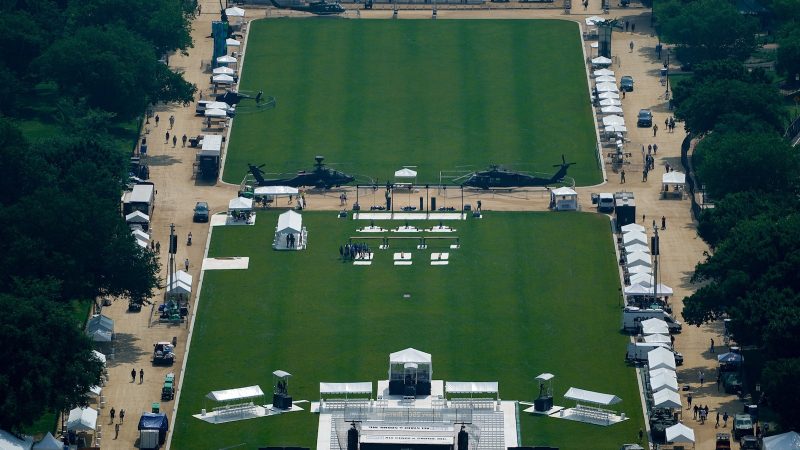
The story of President Trump’s much-discussed military parade began not on the grand stage of the National Mall, but at a far more humble location: a Virginia military base. There, during a children’s event known as the ‘Twilight Tattoo,’ a media executive uttered a phrase that would set the wheels in motion: ‘This would make great television.’
The Army, already considering ways to commemorate its 250th birthday, saw the potential. The ‘Twilight Tattoo,’ a decades-long tradition showcasing the Army’s history with impressive pageantry, was already a captivating spectacle. The idea to replicate, and expand upon, this event on a national scale began to take hold.
Initially, the plan was a more modest exhibit on the National Mall featuring historical Army equipment and information. However, as President Trump’s birthday approached, the vision evolved. The idea of transforming the ‘Twilight Tattoo’ into a full-blown parade, complete with tanks, aircraft, and thousands of soldiers, gained momentum.
One official described the process as ‘knocking on an unlocked door,’ highlighting the ease with which the idea was accepted. President Trump, with his background in media, seemed receptive to the proposal, which aimed to showcase the military’s might and reintroduce the Army to the American people through a visually stunning display.
The final parade included an impressive 6,700 soldiers, 150 vehicles (including numerous tanks), and 50 aircraft, a testament to the scale of the undertaking. The event was designed to capture national attention, aiming for maximum visibility across various media platforms.
However, the parade’s substantial cost has drawn significant criticism. A poll indicated that roughly 60% of Americans believe the parade is a poor use of taxpayer money. The exact cost remains undisclosed, with the Army’s portion alone estimated at $45 million, and security costs expected to add considerably to the total. Senator Tammy Duckworth, an Army veteran, voiced her criticism, suggesting that the funds would be better allocated to support service members’ needs.
The parade’s association with authoritarian displays in countries like Russia and North Korea has also fueled opposition, leading to planned counter-protests under the banner of ‘No Kings Day.’ Despite this criticism, President Trump defended the event, emphasizing its purpose in showcasing the nation’s strength and military prowess. He intends to view the parade from a viewing stand near the White House, culminating with a ceremonial flag-raising and swearing-in of new recruits.
Even with the focus on the Army’s history and service, some elements reflect President Trump’s personal preferences. A late request from the White House secured a flyover by the Air Force Thunderbirds, adding another layer to the already spectacular event. While the White House maintains the parade is a celebration of the Army’s 250th anniversary, the scale and spectacle undeniably bear the mark of its most prominent attendee.









